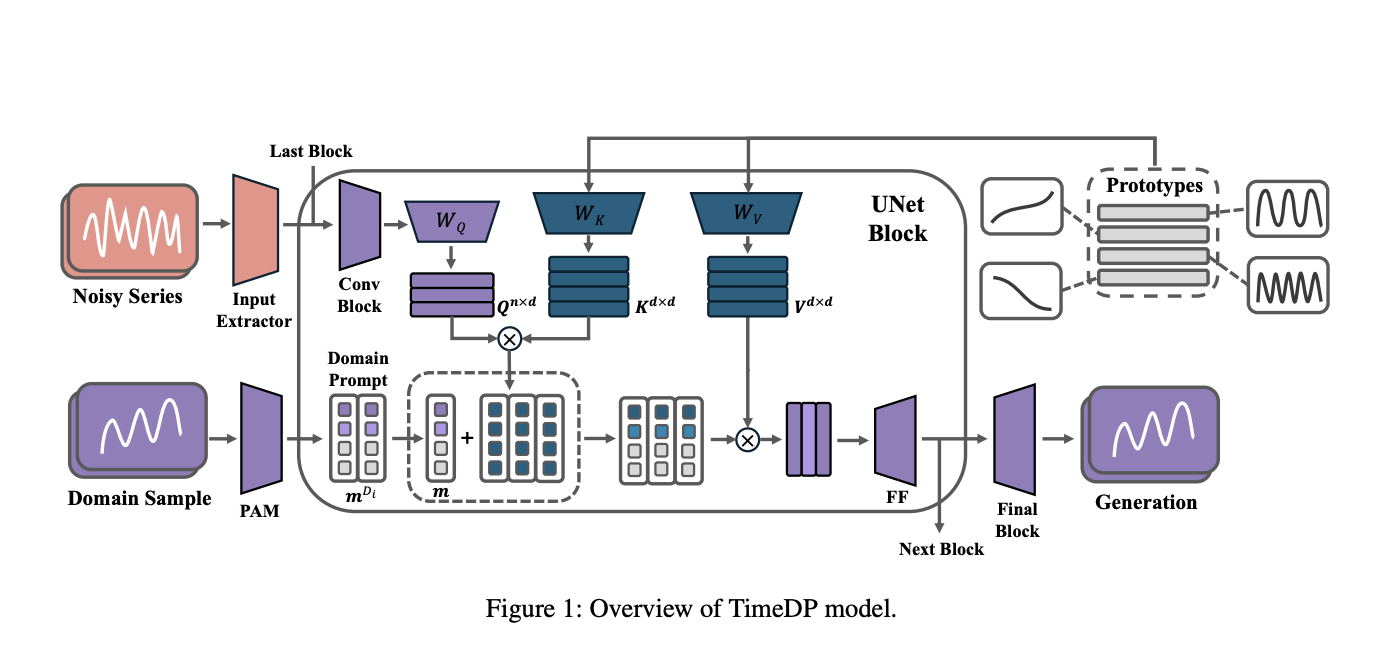
Generating Time Series Data: Importance and Challenges
Generating time series data is crucial for various applications such as data augmentation and creating synthetic datasets. However, when dealing with multiple categories, this task becomes complex due to the wide variations in patterns found in the real world. The challenge increases further when data does not rely on historical records, making it difficult to describe domains accurately using natural language.
Current Methods and Their Limitations
Current methods for generating time series data include models like GANs and VAEs. GANs focus on optimizing temporal dynamics, while VAEs handle trend and seasonal decomposition. Mixed methods attempt to combine different techniques but often struggle to scale across various domains. Diffusion models, like DDPMs, generate data by reversing noise processes but are mainly effective in single-domain scenarios. Multi-domain approaches typically rely on pretraining models on large datasets but do not adequately address the differences between domains.
Introducing TimeDP: A Novel Solution
To address the challenges of generating time series from multiple domains, researchers from Nanjing University, Microsoft Research Asia, and Peking University developed a new model called TimeDP. This model uses semantic prototypes to define time series features, allowing it to differentiate between domains effectively.
How TimeDP Works
TimeDP employs a prototype assignment module to extract domain-specific prototype weights, which helps in learning generation conditions. During the sampling process, it generates domain prompts using few-shot samples from the target domain, ensuring that the generated time series reflects the specific domain’s characteristics.
Training Strategy and Evaluation
The researchers trained TimeDP using data from multiple domains, applying conditional denoising and prototype assignment to guide the generation process. They evaluated the model on 12 datasets across four domains, including energy, transport, nature, and economics. TimeDP outperformed existing models like TimeGAN and TimeVAE, demonstrating superior generation quality and representation disentanglement without relying on class labels.
Conclusion: The Value of TimeDP
The TimeDP model effectively addresses the challenges of multi-domain time series generation, offering better quality and performance on unseen domains. This innovative approach sets a new standard for time series generation and opens avenues for future research in prototype-based learning and domain adaptation.
Get Involved
Check out the research paper for more details. Follow us on Twitter, join our Telegram Channel, and connect with our LinkedIn Group. Don’t forget to join our 65k+ ML SubReddit for more insights.
Transform Your Business with AI
Stay competitive by leveraging TimeDP: A Multi-Domain Time Series Diffusion Model with Domain Prompts. Here’s how AI can enhance your operations:
- Identify Automation Opportunities: Find key customer interaction points that can benefit from AI.
- Define KPIs: Ensure measurable impacts on business outcomes from your AI initiatives.
- Select an AI Solution: Choose tools that fit your needs and allow for customization.
- Implement Gradually: Start with a pilot project, gather data, and expand AI usage wisely.
For AI KPI management advice, reach out to us at hello@itinai.com. For ongoing insights into AI, follow us on Telegram t.me/itinainews or Twitter @itinaicom.
Discover how AI can transform your sales processes and customer engagement by exploring solutions at itinai.com.




























